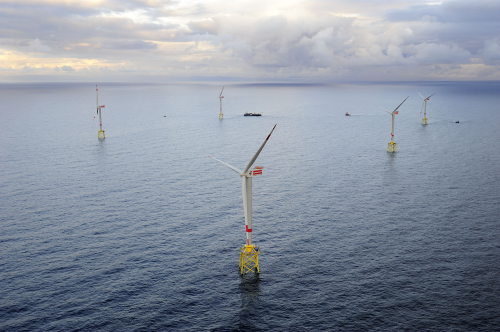
Following strong competition to develop each of the 9 zones, the successful bidders are:
- Moray Firth Zone, Moray Offshore Renewables Ltd which is 75% owned by EDP Renovaveis and 25% owned by SeaEnergy Renewables – 1.3 GW
- Firth of Forth Zone, SeaGreen Wind Energy Ltd equally owned by SSE Renewables and Fluor – 3.5 GW
- Dogger Bank Zone, the Forewind Consortium equally owned by each of SSE Renewables, RWE Npower Renewables, Statoil and Statkraft – 9 GW
- Hornsea Zone, Siemens Project Ventures and Mainstream Renewable Power, a consortium equally owned by Mainstream Renewable Power and Siemens Project Ventures and involving Hochtief Construction – 4 GW
- Norfolk Bank Zone, East Anglia Offshore Wind Ltd equally owned by Scottish Power Renewables and Vattenfall Vindkraft – 7.2 GW
- Hastings Zone, Eon Climate and Renewables UK– 0.6 GW
- West of Isle of Wight Zone, Eneco New Energy – 0.9 GW
- Bristol Channel Zone, RWE Npower Renewables, the UK subsidiary of RWE Innogy – 1.5 GW
- Irish Sea Zone, Centrica Renewable Energy and involving RES Group – 4.2 GW
Announcing the successful bids, Crown Estate director of Marine Estate Rob Hastings said that the fact that there was competition for each of the 9 zones highlighted the attractiveness of the UK Continental Shelf to companies investing in offshore wind energy:
"The Crown Estate has committed to invest more than £100 million in the programme. The industry has today demonstrated an appetite to deliver up to 32 GW of offshore wind farms operating by 2020 – which in itself is potentially a quarter or more of the UK’s electricity needs. This will be a considerable challenge particularly in relation to the supply chain".
Today’s announcement marks the start of the consenting process. The new and now operational consenting authority for this programme, the Infrastructure Planning Commission, will make the ultimate decisions on the detailed plans for offshore wind farms that the development partners will ultimately submit.
"This process will ensure the engagement of regulators such as the newly formed Marine Management Organisation, CAA, MoD, the Department for Energy & Climate Change, Natural England and the Environment Agency", Hastings added.
Background in brief
- Offshore wind in the UK is developed in a series of competitive leasing rounds. Two rounds have been completed and these projects are now being developed;
- The Round 3 offshore wind energy programme was launched by The Crown Estate 18 months ago;
- This round was structured differently from previous leasing rounds, as tenders were put forward for nine zones of development each potentially containing multiple projects. The scale of some of these zones is much larger than anything seen before, with some zones potentially yielding 10 GW of projects. In total the size of Round 3 is anticipated to be at least 25 GW - compared to the combined total of 8 GW from Rounds 1 and 2;
- Nine development zones have been allocated to companies and consortia listed above - to start the development process. The British Wind Energy Association say that the scale of this project represents a step change for the global industry;
- Another new feature of Round 3 is that within this process the Crown Estate will co-invest with developers, with the aim of "facilitating efficient delivery of the wind farms".
